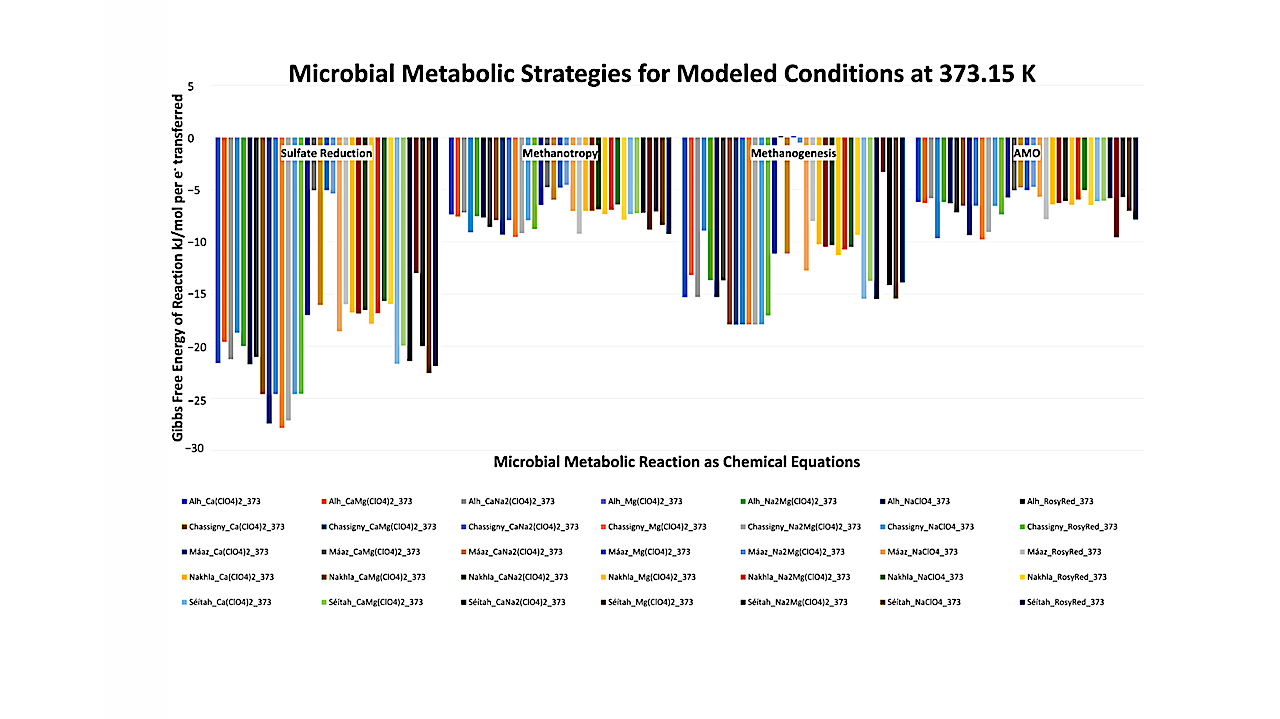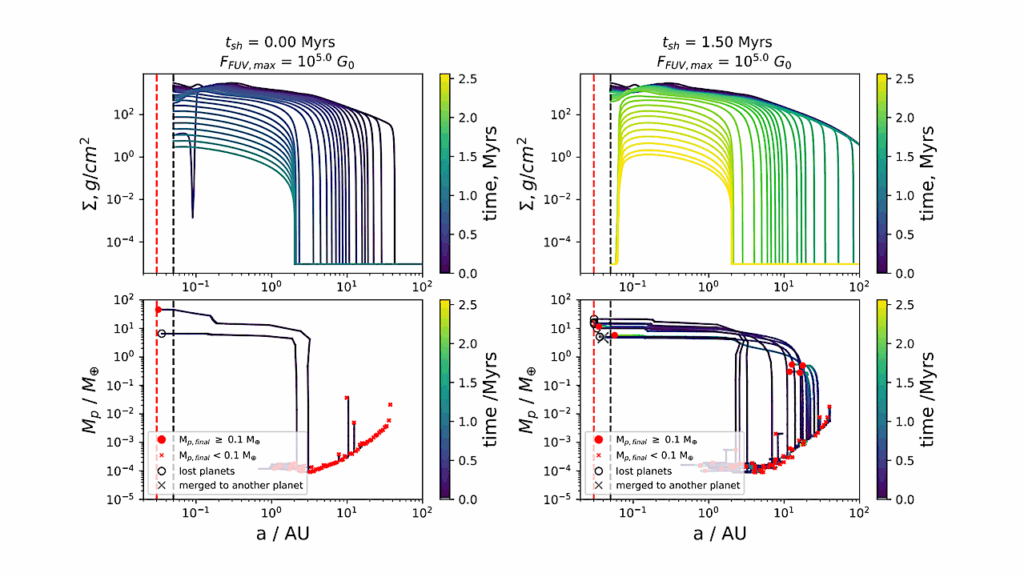Mineral Indicators of Geologically Recent Past Habitability on Mars

We provide new support for habitable microenvironments in the near-subsurface of Mars, hosted in Fe- and Mg-rich rock units, and present a list of minerals that can serve as indicators of specific water–rock reactions in recent geologic paleohabitats for follow-on study.
We modeled, using a thermodynamic basis without selective phase suppression, the reactions of published Martian meteorites and Jezero Crater igneous rock compositions and reasonable planetary waters (saline, alkaline waters) using Geochemist’s Workbench Ver. 12.0. Solid-phase inputs were meteorite compositions for ALH 77005, Nakhla, and Chassigny, and two rock units from the Mars 2020 Perseverance rover sites, Máaz and Séítah.
Six plausible Martian groundwater types [NaClO4, Mg(ClO4)2, Ca(ClO4)2, Mg-Na2(ClO4)2, Ca-Na2(ClO4)2, Mg-Ca(ClO4)2] and a unique Mars soil-water analog solution (dilute saline solution) named “Rosy Red”, related to the Phoenix Lander mission, were the aqueous-phase inputs. Geophysical conditions were tuned to near-subsurface Mars (100 °C or 373.15 K, associated with residual heat from a magmatic system, impact event, or a concentration of radionuclides, and 101.3 kPa, similar to <10 m depth).
Mineral products were dominated by phyllosilicates such as serpentine-group minerals in most reaction paths, but differed in some important indicator minerals. Modeled products varied in physicochemical properties (pH, Eh, conductivity), major ion activities, and related gas fugacities, with different ecological implications.
The microbial habitability of pore spaces in subsurface groundwater percolation systems was interrogated at equilibrium in a thermodynamic framework, based on Gibbs Free Energy Minimization. Models run with the Chassigny meteorite produced the overall highest H2 fugacity. Models reliant on the Rosy Red soil-water analog produced the highest sustained CH4 fugacity (maximum values observed for reactant ALH 77005).
In general, Chassigny meteorite protoliths produced the best yield regarding Gibbs Free Energy, from an astrobiological perspective. Occurrences of serpentine and saponite across models are key: these minerals have been observed using CRISM spectral data, and their formation via serpentinization would be consistent with geologically recent-past H2 and CH4 production and sustained energy sources for microbial life.
We list index minerals to be used as diagnostic for paleo water–rock models that could have supported geologically recent-past microbial activity, and suggest their application as criteria for future astrobiology study-site selections.
by Roger Hart, and Dawn Cardace
Life 2023, 13(12), 2349; https://doi.org/10.3390/life13122349
Submission received: 7 October 2023 / Revised: 25 November 2023 / Accepted: 5 December 2023 / Published: 15 December 2023
https://www.mdpi.com/2075-1729/13/12/2349
Astrobiology








